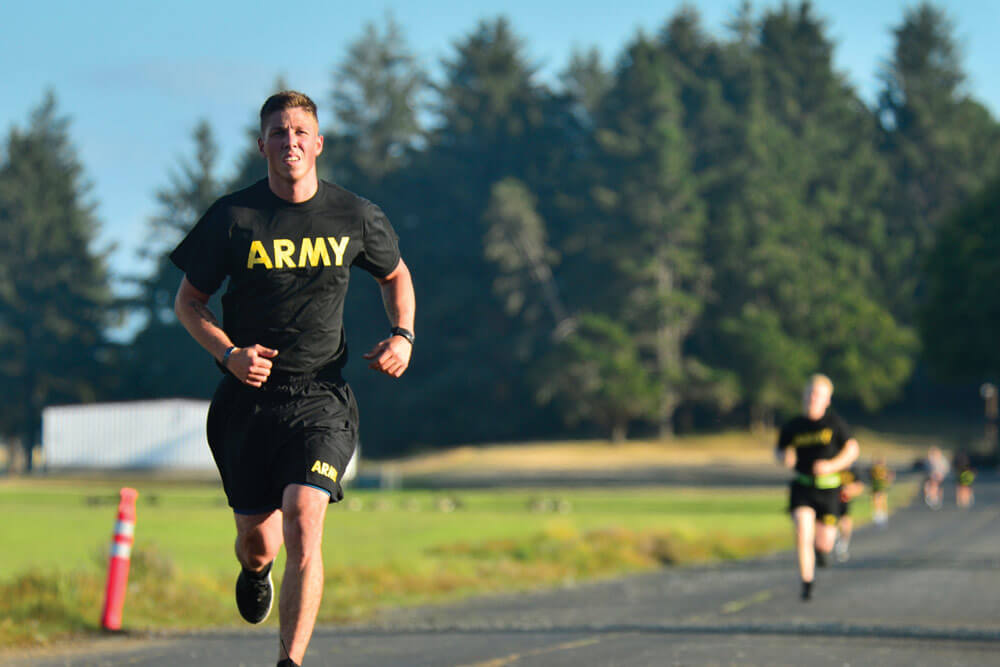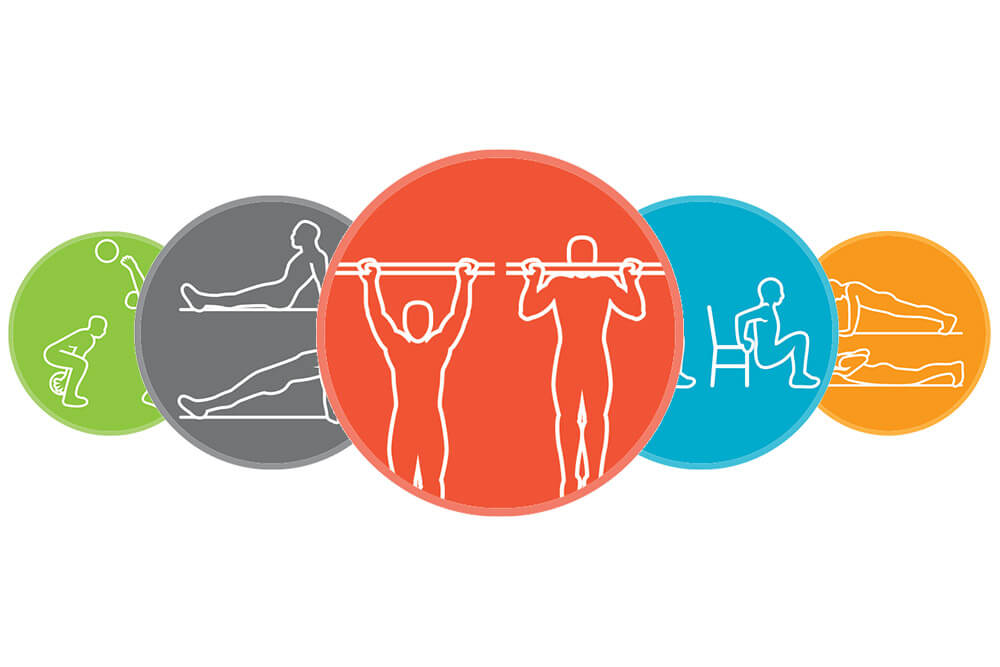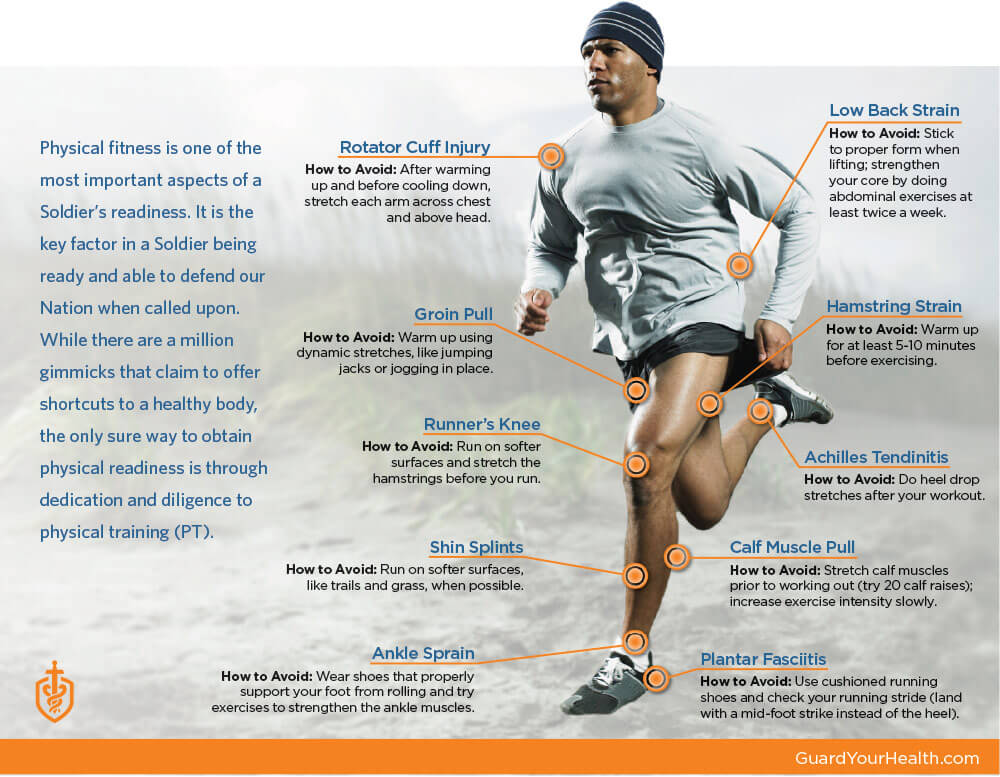When prepping for the Army Physical Fitness Test (APFT), make sure you’re ready to run. When it comes to the two-mile run portion of the test, not setting goals or pacing yourself before hitting the pavement can lead to injury and literally put you out of the running.
DISCLAIMER: Consult a trained medical professional before beginning any strenuous exercise program, making any changes in your diet and/or physical activity levels or before implementing any of the recommendations presented in this article. The Army National Guard and Schatz Strategy Group disclaims any liability, personal or professional, resulting from the misapplication of any training procedure, technique, or guidance described in this article, which is for informational purposes only, and does not constitute medical advice or guidance.
![]() 1. Determine the score.
1. Determine the score.
To pass the two-mile APFT run requirement, you need to score at least a 60. That means, if you’re between the ages of 17-26, you have to finish running two miles in under 17 minutes or you fail that portion of the test.
2. Set a goal.
The faster you run, the better you score. Find out the minimum time requirement for your age and gender, then aim higher. For example, aim to improve your run by one minute and dedicate your training to shaving off seconds each week for 10 weeks.
3. Build endurance.
The best way to build endurance is through interval workouts performed at least three times a week for a month. Walk for 90 seconds, then run for 30 seconds. Repeat 10 times for a total of 20 minutes. Feel easy? Switch to walking for 30 seconds and running for 90 seconds. Treadmills have preset interval workouts if you don’t feel comfortable doing it on your own. Push to the next level in the following month by jogging for 20 minutes three times a week. Then move up to a 10-minute jog, followed by a one-minute sprint, followed by a two-minute jog. Repeat this routine two times.
4. Vary the pace.
Mixing up your speed and intensity will amp up your endurance. Time yourself running fast in a two-mile run (short distance, high intensity). Then for your next workout, run four miles at an easy pace (long distance, low intensity). Getting comfortable with running a longer distance will make the APFT run feel that much shorter on test day.
5. Perfect your running form.
Employing proper running form will make you a more efficient and faster runner.
- Keep your head straight with your core and hips aligned. Lean forward slightly.
- Keep your shoulders relaxed and rolled back.
- Keep your arms bent at the elbow and keep your wrists straight with your hands cupped.
- Take deep, steady breaths. Breathe in for 3 seconds and out for 2. Repeat.
- Point your feet directly forward and do not bring your knees up too high.
6. Cross-train.
Adding weight training and other forms of cardio such as biking, swimming, elliptical workouts, or team sports will boost your endurance and strengthen your muscles.
7. Stretch before and after each workout.
This is a biggie. If you’ve not been warming up or cooling down, you need to start. Stretches prime your muscles before running and relieve tension afterward. Proper stretching significantly lowers the risk of injury.
8. Pick the right shoes.
Wearing appropriate running shoes, and ensuring that they fit properly, makes a difference. Most quality athletic apparel stores will have staff educated on how to select the right shoe for your fit and style of running. Don’t forget it is also key to properly lace your shoes.
9. Hydrate frequently.
Drink 16 ounces of water one hour before your run, eight ounces just before you start running, and sip a couple of ounces every 10 minutes during your run.
10. Stay positive!
You can do this. If you don’t feel motivated, just put on your running clothes. Oftentimes getting suited up is half the battle. Follow these basic steps and get ready to dominate your next two-mile run requirement.
By Staff Writer Ruth Ann Replogle



